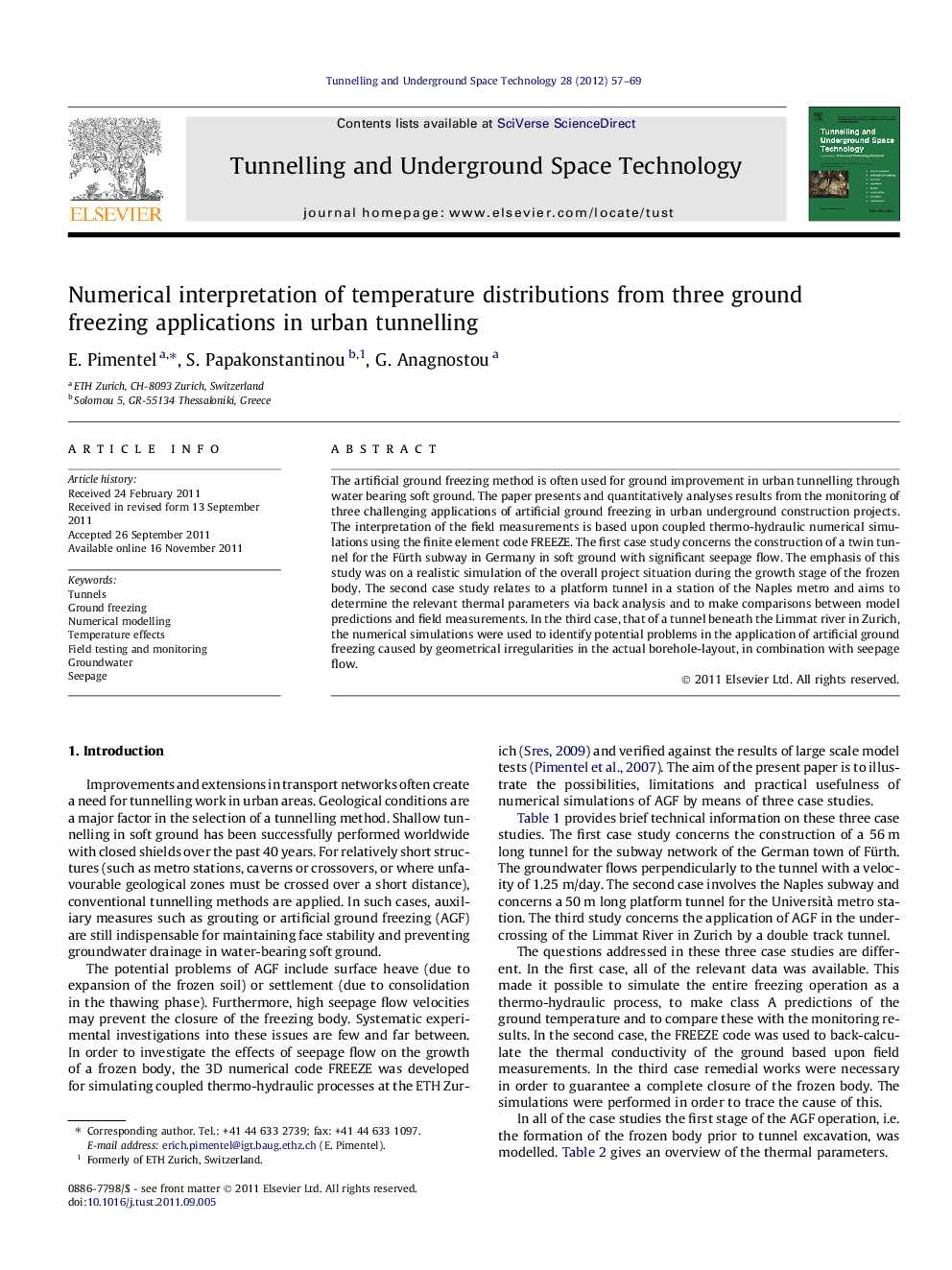| Article ID | Journal | Published Year | Pages | File Type |
|---|---|---|---|---|
| 312476 | Tunnelling and Underground Space Technology | 2012 | 13 Pages |
The artificial ground freezing method is often used for ground improvement in urban tunnelling through water bearing soft ground. The paper presents and quantitatively analyses results from the monitoring of three challenging applications of artificial ground freezing in urban underground construction projects. The interpretation of the field measurements is based upon coupled thermo-hydraulic numerical simulations using the finite element code FREEZE. The first case study concerns the construction of a twin tunnel for the Fürth subway in Germany in soft ground with significant seepage flow. The emphasis of this study was on a realistic simulation of the overall project situation during the growth stage of the frozen body. The second case study relates to a platform tunnel in a station of the Naples metro and aims to determine the relevant thermal parameters via back analysis and to make comparisons between model predictions and field measurements. In the third case, that of a tunnel beneath the Limmat river in Zurich, the numerical simulations were used to identify potential problems in the application of artificial ground freezing caused by geometrical irregularities in the actual borehole-layout, in combination with seepage flow.
► We simulate the complete artificial ground freezing process in 3 underground projects. ► We succeeded to obtain class A predictions which agree well with the monitoring data. ► We determine the thermal parameters of uncommon materials via back analysis. ► We analyze a problematic case and show a potential reason for the not-closure of the frozen body.
